Singled Out | Inside thinking, practice and the making of the show
- October 28th, 2013
- Posted in Uncategorized
- Write comment

I’ve been largely absent from this site for a little while, not due to anything other than my own need to focus and hone in something else. The making of a show. Singled Out which was programmed as a part of The Reginald Season at The Seymour Centre… http://www.seymourcentre.com/events/event/singled-out/ To explain where I’ve been and what I’ve been up to and thinking, I’ll need to back track a little.
In early 2012, I was reading about the rise of people living alone; and it occurred to me that many of my best friends were not a part of a “nuclear family” living arrangement. In my early 30s and some, but not all, my friends were living alone. It was an even split. Some, not all had significant others. And despite depictions in advertising, government policy, even a lot of theatrical drama is around the family unit – this has gone unexamined or unrecognised. Being single or a solo dweller is seen as a phase of a person’s early adult life (perhaps) but not necessarily a desirable life choice.
Interestingly the role of the writer in the theatre is one of sometimes solitary confinement. I started thinking about the value of having time and space to oneself – surely that is where the imagination is at its most free? The space in which reflection and reflectiveness is natural?
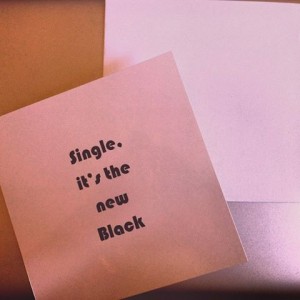
For me, a natural and obvious fit to create a show on solo living with individuals (writers) that require being alone in order to make art.
So I wrote a proposal to ArtsNSW, gathered support from some amazing organisations – The Seymour Centre and The Arts Platform – and gathered support from those who knew my previous works – “Stories From the 428” and “A View From Moving Windows.” And before the end of the year, I was granted some money, a space.
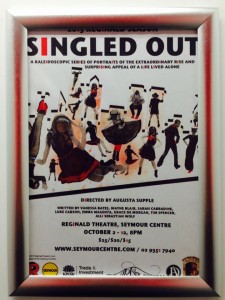
It had been a big year for me already by the time Singled Out rolled around. I had survived January (traditionally a big month in the Arts calender with the Sydney Festival), created and produced a new Playwrights Festival called “Mayday Playwrights Festival”, Been the official blogger for the Australian Theatre Forum 2013 in Canberra, continued my work as a reviewer – all whilst maintaining a very demanding day job. Singled Out became a creative lighthouse in a very demanding difficult year.
The process of creating the show started with development meetings. A collection of 8 playwrights were selected due to their difference in style, creative verve, passionate perspectives and backgrounds… A couple I got to know through a small workshop I held in 2012 Write Here Write Now, one I met through another playwright, another I have known for years in my several incantations in the film industry, others through previous projects Brand Spanking New or Stories from the 428 or Mayday Playwrights Festival. Some I’d worked with before, some I’d not worked with before. Some were familiar with the form, others not. Finally arriving at the magic list: Vanessa Bates, Wayne Blair, Luke Carson, Sarah Carradine, Emma Magenta, Grace De Morgan, Alli Sebastian-Wolf and Tim Spencer.
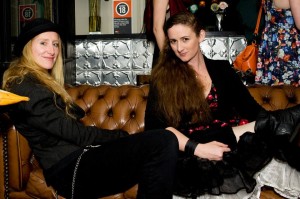
The combination of writers is always important. And can make or break a project. Supreme support and generosity is required – also the mature understanding that all are not in competition with each other but each offering a unique slice of the pie.
I started the process of developing what is now known as the “multi-playwright project” in 2007… and have every year since played with the form or the process – developing an idea of the form as more than a collection of racehorses, but more like a bouquet of flowers. At it’s simplest form of presentation, many may see it as a “short play festival” – but that is really because that’s the dominant experience of people’s “short form” understanding. It’s also similar to that of a team of writers for TV – except each writer is asked and encouraged to maintain their voice – not to homogenize with others – and their idea, approach or flavour is not to be homogenized either. There is strength in diversity. My pledge remained: “Whatever you write, I will stage.”
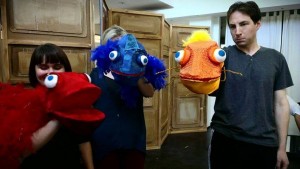
The issue with so much new writing, in my experience is the second guessing of what it is the “company” or the “director” or the “venue” is wanting is the death of the writer. I wanted to create a field where in the writer is aware of the whole situation and encouraged to make their own unique stand amongst the other artists – the writer is encouraged and expected to write as only they can write about the things THEY are interested in.
Also it’s my experience that most playwrights when they are writing are not necessarily writing with a guaranteed production on offer – nor a fee – nor a venue secured. All of this I think makes nervous art. Art that is insecure.
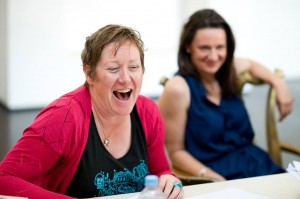
After a series of writing sessions, the casting process began – a mix of open call, targeted approaches and actors written specifically for by the writers… Coffee, phone calls, agents, Facebook call outs, emails, I spoke with nearly 100 artists in four days to have the dream cast assembled: Michael Howlett, Richard Cox, Kate Fitzpatrick, Amanda Stephens Lee, Paul Armstrong, Roland Baker, Alex Bryant-Smith, Josipa Draisma, Leof Kingsford-Smith, Rosie Lourde, Eloise Snape, Amber McMahon, Bali Padda.
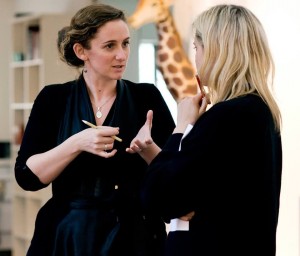
Then from the 15th of September – rehearsals. For me this was everyday for 12 hours a day… for the actors – between 2-5 hours a day… Add in 4 hours across a weekend of working with choreographer Cloe Fournier, and within 2 weeks we had made a show. Some could or would say that the standard for rehearsal is 4-6 weeks… and perhaps for them it would be – but for me, who only had two weeks to direct a show (on my annual leave from my day job) this is what I had – and so I made it count as best I could.
A week out from bump in, a series of untenable circumstances meant that I was now also designing the show – 14 individual worlds, a cast of 12… and a week to find a full set, costumes and an overarching design. With the help of Singled Out Producer Saskia Vromans we got into it, got it together (yes shopping at Kmart after rehearsal until midnight). At the same time we lost our much loved Stage Manager (who was in hospital during half the rehearsal period) and so sending love and well-wishes to her and missing her terribly. But there is something magical about that combination of creative and practical forces – which can make or break a producer/director relationship – in this case it made it. And I will forever be in awe of Ms Saskia Vromans.
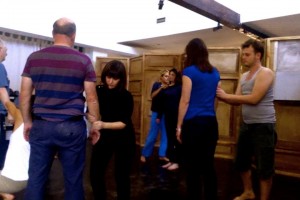
The last weekend before bump in is when the cast met each other for the first time… until this point they had not met each other – except in change over between rehearsals or some had at the launch of the project. And a wonderful collection of people… as exemplified in the full cast exercise illustrated below “Tell me one thing about yourself you don’t think I could guess is you…”
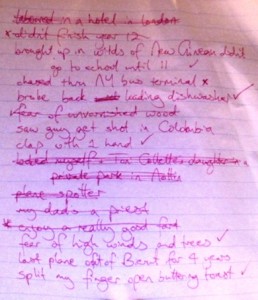
The process is quick – by design as much as necessity – it says “Artists of Sydney who are waiting to make this is the moment you’ve been waiting for – this is the moment for you to step up and show what these years of experience and passion and focus is for…” In this style of work there is no room for indecision or fear or for divas or for hesitation. This process and style of project is about being ready and urgent and skilled enough to commit to each moment, each second as it demands what it will from you. It’s about presence, about being ready. And it doesn’t suit everyone. And that’s alright with me. I am fortunate enough to have found a collection of people who were ready.
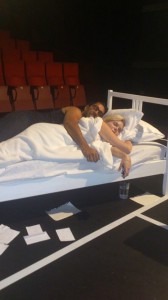
The response from audience and critics varied. As I expected it to… after all theatre literacy is a difficult to ascertain and takes years to understand form, style and then add to that the ouvre of a directors works… Not surprising that some very diverse readings resulted.
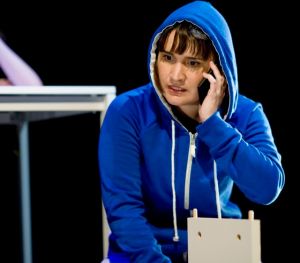
Here’s one of the most simplistic readings by Stage Whispers’ Martin Portus:
http://www.stagewhispers.com.au/reviews/singled-out
“And while a greater ethnic and demographic variety would be welcome, some theatrically unifying device to all eight playlettes was also needed. The voiced experience of Sydney would be a good start. Without it, Supple was left with mismatched vignettes which together lacked cohesion and the chance of a greater shared theatrical invention. The final fine song, Never Alone, like the opening tableau, held that promise.”
In response to Martin’s confusion about the form – perhaps if he understood the form is designed to be what he saw as “mismatched vignettes”. Also I guess ignoring the ethnicity of the cast (it’s fine that he saw the multicultural cast – containing 6 ethnicities- as monocultural). Also interesting that Portus also ignored the design concept or set. So the ensemble sections and the overarching design conceit wasn’t clear for Portus. A case of a writer not really grasping the experiment and exposing his inexperience with reading this style of work – perhaps hoping it was something other than it was. Which is as helpful in a review as, say, me wishing that Equus was a story about female sexuality.
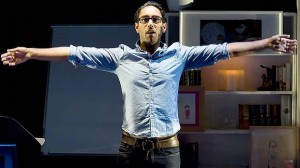
Next up Jason Blake from the Sydney Morning Herald…
http://www.smh.com.au/entertainment/stage/man-as-an-island-connecting-in-a-crowded-swamp-20131006-2v278.html?fb_action_ids=10151935617626967&fb_action_types=og.recommends&fb_source=timeline_og&action_object_map={%2210151935617626967%22%3A518164201598186}&action_type_map={%2210151935617626967%22%3A%22og.recommends%22}&action_ref_map=[]
“The works are disparate in terms of content and quality, although they harness together reasonably well. Supple’s division of the stage into multiple performance spaces, letting the stories and the moods they create to echo into one another, pays off.”
It seems that Blake reads this differently. Perhaps because he’s seen other works of mine… and because he himself has a background as a trained theatre director – Victorian College of the Arts.
Interestingly Blake’s question about the show is this:
“One issue the show doesn’t address strongly is society’s prejudices towards those who chose to live alone: the assumption that singletons are either incurably selfish or defective in some way. If anything, Singled Out’s tragi-comic sad sacks tend to reinforce the idea.”
For me, the assumptions are there within the audience and I don’t really feel compelled to address that prejudice – but really give some point of reflection. Likewise I don’t think it’s the role of the director to make the Danish royalty NOT look like a bunch of self interested, intellectually hobbled wankers in the staging of Hamlet. And I also don’t think the scenes did anything of the sort to show that ONLY people who live alone are incurably selfish or defective.” After all which piece of theatre showing couples or families manages to show them as NOT incurably selfish or defective? Death of a Salesman? Nope. Three Sisters? Nope. Hamlet? Nope.

And here’s another review, this time from Lloyd Bradford Syke of Crikey.com …
http://blogs.crikey.com.au/curtaincall/2013/10/25/review-singled-out-seymour-centre-sydney/?utm_source=feedburner&utm_medium=feed&utm_campaign=Feed%3A+CrikeyBlogs+%28Crikey+Blogs%29
“This is, arguably, her greatest contribution to the Sydney scene and it’s an almost entirely selfless one. In pulling so many disparate strands together, one is likely to have a few that break and whose colours aren’t entirely complementary. But, as with all such projects she’s devised, the whole tends to be greater than the sum of its parts. While the standard of writing is quite variable (Blair and Bates stand head and shoulders above the rest, for mine), that of performance is high. And thematic integrity, sturdy. It’s an heroic undertaking which deserves more than cynicism and lip-service.”
So thematically sturdy and though still uneven (yes – well not all pieces are the same length, nor have the same staging demands, nor do the writers all have the same amount of stage credits/awards/experience) the show itself is seen to be cohesive.
Brad Syke has reviewed most of my work to date…
Brand Spanking New
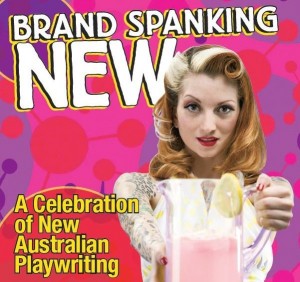
http://blogs.crikey.com.au/curtaincall/2010/10/31/review-brand-spanking-new-week-1-new-theatre-sydney/?wpmp_switcher=mobile
Stories from the 428
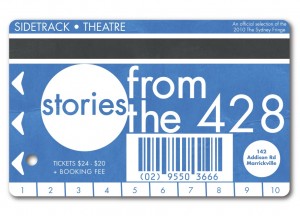
https://www.australianstage.com.au/201004033361/reviews/sydney/stories-from-the-428-week-2.html
A View From Moving Windows
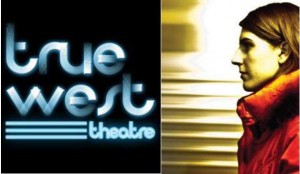
https://www.australianstage.com.au/201210255945/reviews/sydney/a-view-from-moving-windows-|-true-west-theatre.html
Mayday Playwrights Festival
http://blogs.crikey.com.au/curtaincall/2013/05/23/a-moment-of-solitude-mayday-plays-an-indie-shot-in-the-arm/?wpmp_switcher=mobile
So it’s not surprising he “got” what was going on. It’s a pleasure to have that sort of knowledge and context reviewing one’s work. It really helps offset some of the more basic and glib understanding of others.
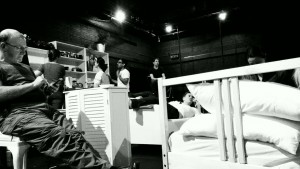
The show itself was a beautiful experiment of echoes and ideas and a multitude of artists… and the Q&A held post show (on my birthday of all days) saw about 40 people staying back to hear a little more about the ideas and the process.. the interesting aspect of this how this show conjured very diverse responses – some saying they thought it was brilliant and hilarious and very familiar and reassuring … others saying the show was depressing and dark. Some finding it “a big ask” for the audience to sit through 1 hour 45 without an interval… others saying they didn’t notice the time and couldn’t imagine the show being without all the parts that it had.
My dear Dr Ian Maxwell attended and had asked his students to come along to check it out… which makes me six times happier that I am still linked with my Alma Mater.
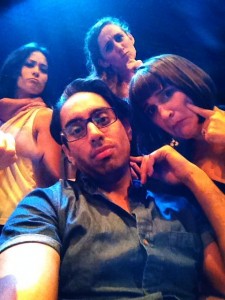
And without the responses and reviews – as director and creative producer, I knew we had made a completely unique and very different show – which flexed and fluctuated in tone and style and genre and idea… I knew I was making an aural treasure hunt – a visual echo and I knew I was making it with some of the most talented and brave, ready artists in Sydney. Artists ready to defy a traditional notion of three-act structure, ready to play with new writing and new forms of writing. I know that this show will carry its significance on in the lives and thinking of the artists it engaged and the audiences it reached – and that is an incredibly humbling and inspiring thought. The idea that at this time and place this group of people decided to privilege this idea, this project to work together. My greatest achievement with Singled Out is that I managed to collaborate with some of Australia’s great artists who are all in different stages of their career. It was a sheer honour and a joy. And I feel lucky and proud (though exhausted) of what we made.
 long lasting creative connections. Some artists resurfacing now to ask “what’s next” – others writing notes of gratitude and thanks…</p>
<p>One actor writing:<br />
<em>“It was a dream, wasn’t it? The whole thing. One of those mad hallucinations you get when you’re really sick; a kind of apparition that you could swear just wiped your forehead. Next morning there’s no evidence for any of it, except maybe your bedclothes are flipped 90 degrees from all the kicking. I miss it.”</em></p>
<p>And I miss it too. </p>
<p>And I hope to remain in the glow of it for a little while longer until someone bursts my bubble with the crass and obvious question… “So what’s your next project?”</p>
<p>And you can quote me on this:<br />
“My next project? Don’t know yet – something beautiful and hopeful and bright eyed and curious. Definitely not Hamlet.”</p>
<p><img src=)